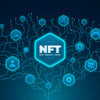The Future of 3D Animation: How 3D Models Are Changing the Industry.

3D animation has emerged as an innovation that has changed the industry in the dynamic continually changing world of animation. It has completely changed how animations are made, allowing experiences that are both realistic and visually appealing. In this piece, we'll analyze the possibilities of 3D animation and examine the crucial part 3D assets and 3D models have played in the development of the sector.
With the use of 3D animation technology, animators are now able to produce incredibly lifelike animations that are rich in detail and realism. There are no adequate words to express the value of 3D animation to the animation industry. Through captivating audiences via a variety of media, it has revolutionized the way tales are visualized and told. 3D animation has emerged as a key factor in the growth and creativity of the business, appearing in everything from movies and television shows to video games and virtual reality experiences.
I. The Evolution of Animation Industry.
a. The Animation Industry's History and Traditional Animation Techniques.
Since the late 19th century, the animation business has enjoyed a rich and colorful history. Traditional animation methods were used at first, where talented artists patiently hand-drew each frame to provide the appearance of movement. The basis for the modern type of animation was built by these methods, including cel animation and stop-motion animation.
The animation industry has prospered throughout the years, capturing viewers with beloved characters and compelling storyline. With the help of Walt Disney's classic creations and Studio Ghibli's avant-garde approaches, animation developed into a potent vehicle for entertainment and creative expression.
b. 3D Animation and Its Impact on the Industry.
However, the emergence of 3D animation resulted in a significant shift of the animation sector. With the introduction of computer-generated imagery (CGI), animated movies, TV shows, and video games gained a new degree of realism and visual sophistication.
To generate virtual three-dimensional objects, characters, and environments, 3D animation uses sophisticated computer software, in contrast to traditional animation approaches. With the help of this ground-breaking method, animators were able to precisely modify these digital models and bring them to life in unusual ways.
A wide variety of artistic undertakings fall under the umbrella of the animation business as a whole. Animation has taken over numerous industries and won over audiences all over the world, from animated feature films and TV shows to advertising, gaming, and even educational content.
The animation sector continues to develop and grow due to its capacity to combine artistic talent and technological innovation. It offers infinite chances for illustrators, animators, and storytellers to showcase their skills and expand the possibilities of imagination.

II. The Rise of 3D Models.
3D models are digital renderings of objects, people, and environments produced by specialist software for use in animation. The shape, texture, and motion of these models are defined by the intricate wireframes and polygons that make them up. Animation artists can give these models life and produce engaging animations by modifying them in a virtual environment.
a. Importance of 3D Models in the Animation Process.
Due to their adaptability and effectiveness, the use of 3D models has taken center stage in the animation process. 3D models give animators a strong platform to work with, in contrast to previous animation techniques that required manually creating every frame. These models serve as a digital framework that lets animators easily manage and adjust different animation aspects.
In addition, 3D models provide a level of depth and realism that is difficult to accomplish with conventional techniques. Animation professionals may produce believable characters, complex landscapes, and dynamic visual effects by using 3D models in their work. This degree of realism raises the level of animation as a whole, engaging viewers and drawing them into the narrative.
b. Benefits of Using 3D Models in Comparison to Traditional Animation Methods.
The use of 3D models in animation has a number of benefits over traditional methods. The following are some major advantages:
i. Time and Cost Efficiency:
By offering a digital framework that is simple to alter and animated, 3D models speed the animation process. As a result, producing sophisticated animations takes far less time and effort. A more effective workflow is produced as a result of the animators' ability to iterate and modify the models effectively.
ii. Enhanced Creativity and Flexibility:
Animators are allowed to explore a variety of artistic options and experiment with various visual styles when working with 3D models. The adaptability of 3D models enables animators to develop their concepts and increase their level of creativity through iteration and refinement. This gives them the ability to precisely and carefully realize their special vision.
iii. Improved Realism and Visual Effects:
By integrating minute details, realistic physics, and textures, 3D models allow animators to produce extremely lifelike animations. 3D models are capable of simulating realistic lighting, rich visual effects, and natural movements with the help of sophisticated rendering techniques and robust software. This degree of realism attracts viewers and improves the animation's overall quality.
3D models provide animators with more control, efficiency, and creative options than traditional animation techniques. The emergence of 3D models has revolutionized the animation sector, opening the door for breath-taking animations that engage and motivate viewers everywhere.
III. Changing Landscape: How 3D Models Are Transforming the Animation Industry.
a. The Influence of 3D Models on Animation Storytelling and Visual Effects.
The use of 3D models has significantly changed how stories are told in animation and how captivating visual effects are produced. Using 3D models, animators can create complex and realistic worlds that bring their stories to life. These models make it possible to produce realistically lifelike actors, richly detailed backgrounds, and fluid camera motions.
Animators can improvise any element of their sequences with accuracy and control by employing 3D models. To elicit particular moods and feelings, they can change the lighting, texture, and camera angles. With this much capability, animators may produce aesthetically breathtaking scenes that attract viewers and strengthen the overall effect of the narrative.
b. The Role of 3D Models in Creating Realistic Characters and Environments.
Making lifelike characters and environments come to life using 3D models is one of its many significant advantages. Characters with intricate facial expressions, precise proportions, and fluid movements can be created by animators using complex and extremely detailed techniques. With such realism, viewers are better able to empathize with the characters and become fully engaged in the story of the animation.
A rich and immersive atmosphere can be created by animators using 3D models. Every piece can be created with extreme care, from expansive vistas to finely planned interiors. The spectator will feel more immersed in the animated world because to the depth and authenticity that this realism brings to the medium.
Additionally, 3D rigged models are essential for animating characters with realistic movements. A 3D model is rigged when a skeleton structure is added, enabling animators to modify and manage the model's movements.
Whether it be delicate face expression changes or intricate body movements, animators can generate realistic-looking animations through the use of 3D rigged models. The animation's overall quality and realism are boosted by the flexibility and accuracy provided by 3D rigged models. The possibilities for narrative and aesthetic expression in 3D animation are endless when lifelike characters, vivid surroundings, and 3D rigged models are combined.
C. The Impact of 3D Models on Animation Quality and Production Efficiency.
The effectiveness of production and the quality of animation have both greatly benefited from the use of 3D models. Traditional animation techniques were time-consuming and required meticulously hand-drawn frames. However, animators can expedite the production process and increase levels of efficiency with 3D models.
When developing objects, characters, and positions from scratch, animators can save time and effort by leveraging pre-built 3D models. This time-saving feature enables artists to concentrate on honing the creative components of the animation and producing higher-quality work. Further improving production efficiency is the capability of using modified and reused 3D models in various projects.
The amount of depth and realism that 3D models may achieve also enhance the animation's overall quality. Animators are now capable of performing complex movements and delicate facial expressions with a level of accuracy and visual fidelity that was previously unheard of. This level of detail raises the animation's quality and improves the viewing experience.

IV. Changing Trends in Animation.
a. Adoption of 3D models in various industries and applications.
The influence of 3D animation and its models extends beyond the conventional spheres of film and television. 3D models are now being used in many different fields and applications, altering the way we consume visual media. 3D models have been incorporated into a variety of sectors, fostering better communication, comprehension, and creativity, from product design and architecture to medical simulations and scientific visualizations.
b. Integration of 3D models in video games, films, and virtual reality.
A significant number of 3D models, particularly 3D rigged models, have been used into video games, movies, and virtual reality, changing how we engage with digital media. In video games, 3D models, particularly rigged models, give characters, things, and environments life and produce fascinating and immersive experiences. Game developers may generate realistic movements and animations by manipulating and controlling rigged models, which improves the gameplay overall.
Similar to how games and movies extensively rely on 3D models, especially rigged models, to produce jaw-dropping special effects and lifelike animations. Rigged models let filmmakers to give characters realistic, flowing movements, which enhances the actors' performances. The use of 3D rigged models is essential for improving the visual appeal of movies, whether it is through capturing the lifelike movements of an imaginary creature or the fine features of a futuristic cityscape.
C. Emerging trends in 3D animation and their impact on the industry.
i. Real-time rendering and interactive experiences.
In the animation sector, real-time rendering has completely changed the game by enabling producers to receive immediate feedback on their work and make changes as they go. Real-time rendering empowers animators to produce dynamic and interactive experiences thanks to the strength of contemporary graphics cards and tailored software. Real-time animated material, including live events, interactive storytelling, and even virtual influencers, has been made possible by this trend.
ii. Virtual production and augmented reality.
By seamlessly combining real-world actors and environments with digital ones, virtual production has completely changed how movies are made. Filmmakers can perceive situations in real-time while saving time and resources by integrating 3D models and real-time rendering. This idea is developed further by augmented reality (AR), which superimposes virtual features over the physical world. As augmented reality (AR) driven experiences and applications gain popularity, new opportunities for 3D models to interact with the environment and improve user experiences are emerging.
iii. Cross-platform compatibility and mobile applications.
Cross-platform compatibility is essential in today's digital world. 3D models and animations are now more widely available than ever thanks to the proliferation of mobile devices. 3D models are used in mobile games and applications to create immersive experiences for users of smartphones and tablets. Cross-platform compatibility also enables seamless device integration, allowing users to access and interact with 3D models on a variety of platforms, from desktops to mobile devices.
The significance of 3D models becomes more and more clear as these innovations continue to influence the animation sector. They are positioned to be an important factor in the development of animation due to their adaptability, realism, and interoperability with various platforms. Animators can unlock new creative possibilities and fascinate viewers in ways that have never been seen before by embracing these new trends and utilizing the power of 3D models.
V. The Future of 3D Animation.
A. Predictions and Insights into the Future of 3D Animation.
The future of 3D animation is an interesting world with limitless potential. We could be expecting several important breakthroughs in the field as technology develops and artistic boundaries are pushed. Here are some predictions and hints about what the future of 3D animation holds.
i. Enhanced Realism and Immersion:
As time goes on, improvements in rendering techniques and computational power allow 3D animations to become more lifelike and immersive. We can anticipate animations in the future that are nearly indistinguishable from reality, fusing the virtual and physical worlds.
ii. Interactive Experiences:
The popularity of interactive experiences is rising, and more interactive 3D animation is likely in the near future. To develop immersive experiences where viewers may actively participate with the animation, changing its direction and impacting the outcome, animators will use real-time rendering and interactive technologies.
iii. AI-Driven Animation:
The future of 3D animation is expected to be significantly influenced by artificial intelligence (AI). Character rigging and motion capture are two time-consuming chores that AI algorithms can automate, freeing up animators to concentrate on more creative aspects. AI-driven animation techniques are likely to spread more widely, improving productivity and presenting fresh creative opportunities.
B. Emerging Trends and Technologies Shaping the Industry.
Emerging trends and technology that transform how animations are produced and consumed will define the future of 3D animation. The following are some major trends that will influence the sector:
i. Virtual Production:
Virtual production mixes live-action video with in-the-moment 3D rendering to let animators and filmmakers seamlessly blend real-world and virtual settings. With the use of this technology, producers can make quick adjustments, see scenes in real time, and cut down on post-production time, resulting in more effective and dynamic productions.
ii. Augmented Reality (AR):
The impact of augmented reality on 3D animation is obvious and growing across numerous industries. Future AR applications are likely to incorporate 3D animations more frequently, enabling users to interact with animated people and things in the real world and resulting in more immersive and interesting experiences.
iii. Cross-Platform Compatibility and Mobile Applications:
The growth of mobile devices has given 3D animation new opportunities. We may anticipate increased cross-platform compatibility as mobile technology develops, when 3D animations will automatically adjust to various devices and screen sizes. This pattern will make 3D animations more accessible and appeal to a larger audience.

C. The Future of Animation Industry.
The future of 3D animation is closely associated with the future of the industry of animation. As 3D models continue to transform the market, new opportunities and difficulties will present themselves. It will be necessary for professionals to develop new abilities and keep up with the most recent animation technology and trends as animation professions and vocations change to adapt to the changing environment.
The animation market will keep rising due to the increased need for high-quality 3D animations across a variety of industries, including entertainment, advertising, architecture, and education. Talented animators will have an advantage in this competitive market if they can harness the potential of 3D models and use cutting-edge technologies.
VI. Conclusion
There are plenty of opportunities for 3D animation in the future, and 3D models have had a profoundly positive influence. Recognizing the significance of 3D rigged models in influencing the animation sector, My3DModels.com serves as an valuable website for both experts and enthusiasts.
With its large selection of top-notch 3D models, My3DModels.com helps the animation industry by offering a wide variety of 3D assets. My3DModels.com has the tools to satisfy your demands, whether you're working on 3D modeling, character animations, or animation projects. Seize the chances offered by 3D models to realize your full potential as the animation business continues to flourish.




